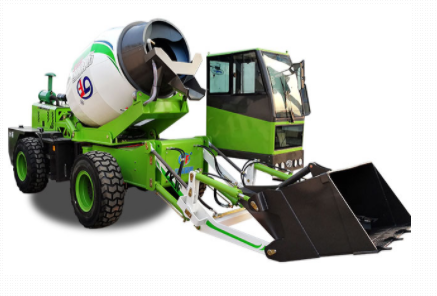你知道为什么搅拌车的罐为什么会在行驶中实现转的过程吗?虽然我们可以在很多地方都会看到搅拌车,但很多人都有不一样的一件,很多人觉得其中的道理很简单。从搅拌站中刚出来的混凝土都是初料,只是在配料后进行简单的搅拌过程而已,为保证混凝土成品的匀质性,需在搅拌车罐里进行二次搅拌。
Do you know why the tank of the mixer truck turns during driving? Although we can see mixer trucks in many places, many people have different things. Many people think the reason is very simple. The concrete just coming out of the mixing plant is the initial material, which is only a simple mixing process after batching. In order to ensure the uniformity of the finished concrete, it is necessary to carry out secondary mixing in the mixer tank.
搅拌车需保证10转/min30转/min的速度,夏季可在一定程度上降低,只需保证混凝土不发生离析、初凝即可,若搅拌过程过于频繁,混凝土中的水分反而会因过度蒸发而导致出料、易性差,影响混凝土构件浇筑质量,主要体现在蜂窝麻面漏筋等质量上的缺陷。
The mixer truck shall ensure the speed of 10 rpm to 30 rpm, which can be reduced to a certain extent in summer. It only needs to ensure that the concrete does not undergo segregation and initial setting. If the mixing process is too frequent, the water in the concrete will lead to poor discharge and workability due to excessive evaporation, which will affect the pouring quality of concrete components, mainly reflected in quality defects such as honeycomb, pitted surface and reinforcement leakage.

在搅拌车运输途中,二次搅拌属于深加工过程,但并不是简单地旋转,罐体的旋转次数度混凝土均质性非常重要。过慢,混凝土内部粗骨料容易下沉。过快,对驾驶人员的产生一定影响,也会增加水分的流失,塌落度也会随之加大,从而影响卸料效果。
During the transportation of the mixer truck, the secondary mixing belongs to the deep processing process, but it is not a simple rotation. The rotation times of the tank and the homogeneity of the concrete are very important. If it is too slow, the coarse aggregate inside the concrete is easy to sink. Too fast will have a certain impact on the safety of drivers, increase the loss of water, and increase the slump, thus affecting the unloading effect.
短暂的堵车情况对混凝土的影响很小,但若堵车时间过长,罐体转动次数应适当加快1圈2圈,时刻注意罐体转动情况,适当时可加水保持混凝土的和易性,避免出现粘罐、闷罐情况。
The short-term traffic jam has little impact on the concrete, but if the traffic jam is too long, the rotation times of the tank should be appropriately accelerated by 1 to 2 turns. Pay attention to the rotation of the tank at all times. When appropriate, add water to maintain the workability of the concrete and avoid sticking and stuffing.
 400-879-1999
400-879-1999
